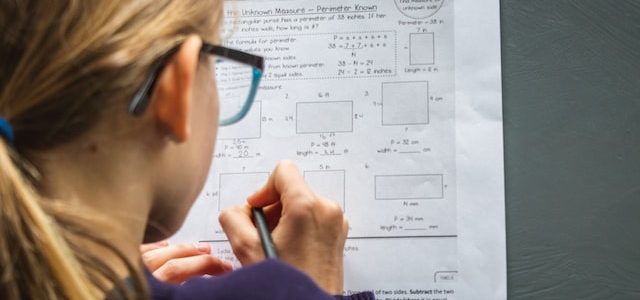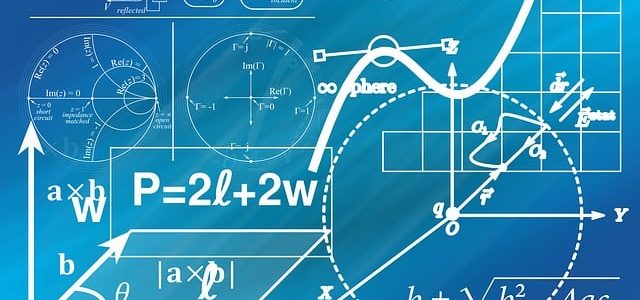Mathematics is the most ancient science and it has been improving our lives since ages. However, we cannot say that it was invented by a single person.
This is because it was developed slowly over thousands of years with the help of several people. Here are 3 of the most prominent mathematicians who are considered as the inventors of this science.
Archimedes
Archimedes was a Greek mathematician, engineer and inventor. He is one of the most famous mathematicians in history and his work changed the way people thought about math and science.
He was born in Syracuse, Sicily, and died in 212 BCE. He is credited with many things, including creating cranes that could drop rocks and claws that could lift ships from the water.
One of the most important things that he invented was a machine called the Archimedes screw, which is still used in many parts of the world today. This is a device that moves water by turning a corkscrew-shaped surface inside a pipe.
Who is the Inventor of Math?
Another of his important inventions is the method for calculating the value of pi, the ratio of a circle’s circumference to its diameter. This was a very accurate calculation and Archimedes offered mathematicians the most precise value of pi ever known.
His work also allowed him to calculate the area and volume of spheres. This helped him understand how to build buildings and bridges. He also wrote down the concept of buoyancy, which is how things float in liquids.
In addition to his mathematical discoveries, he also invented a lot of different machines that were used for war. These machines were very useful when he was defending his home town of Syracuse.
He also wrote a book called The Method concerning Mechanical Theorems which is the only surviving work from antiquity that describes a process of discovery in mathematics. It showed how he had discovered a method for working out the areas and volumes of cones, cylinders, and spheres by using a very simple process that involved infinitesimals. This technique is very similar to the process that we use to do calculus today!
Euclid
Euclid is one of the most influential mathematicians of all time and is also the inventor of math. He is known for his treatise on mathematics, ‘The Elements’ which became the main textbook for teaching mathematics for over 2000 years.
Initially he was not a well known figure in the field of mathematics, but as he developed his system and became more famous, he became known as the “Father of Geometry”. He had a great influence on other mathematicians like Archimedes and Apollonius of Perga.
In his ‘Elements’, Euclid collected, organized and proved geometric ideas that were already being used as applied techniques at the time. He did this through a system of axiomatic forms or logically derived theorems.
It was this approach that gave rise to his system of geometry, which is called ‘Euclidean’ today. It was a revolutionary move in mathematics and had a profound impact on many fields, including optics and music.
He also wrote works on mechanics, including three fragments that have survived to the present day. These are on the heavy and light theory of moving bodies, on balance and on circles described by the ends of a lever.
These works follow the same logical structure as the first four books of the Elements with definitions and proved propositions. They include the Fundamental Theorem of Arithmethic, which states that every positive integer greater than 1 can be written as a product of prime numbers.
He also introduced a repeated, successive subtraction process known as ‘Euclidean division’ that formed the basis of number theory. He also compiled many of the proofs of geometric knowledge which were already being used by other Greek mathematicians, such as Thales and Hippocrates.
Leibniz – Who is The Inventor of Math
Leibniz was born in Germany and received a bachelor’s degree in law at the University of Leipzig. However, he was too young to get his doctorate and he decided to leave. After graduating, he went to the University of Altdorf in Nuremburg, where they were very impressed with his work and invited him to become a professor.
He was a polymath and made many contributions to various fields, including philosophy, science, politics, theology, and math. He also acted as an intermediary between Catholic and Protestant parties, helping to resolve conflicts in Europe so that countries could work together rather than fight each other.
His main contribution to mathematics was the discovery of a new method called calculus, which is still used by scientists today to calculate the motion of objects. Leibniz developed this method in 1675, almost three years before Newton.
During this time, he also invented the binary number system and developed the first practical calculating machine that could add, subtract, multiply and divide. He also formulated the theory of monads, which explained how souls and bodies are connected.
Leibniz wrote 200,000 to 300,000 pages of papers and wrote over 15,000 letters of correspondence. He was also a diplomat who wrote papers that resolved the differences between different parties in Europe and helped bring about reconciliation. He also made important contributions to the development of science and theology in Europe.
Inventor of Math – Pascal
In the 17th century, Blaise Pascal was an important mathematician and philosopher. He contributed to many areas of mathematics, and in correspondence with Fermat he laid the foundations for the theory of probability. He also invented the mechanical calculator known as the pascaline.
Pascal was born into a scholarly family in Clermont-Ferrand, France, where his father, Etienne, favored an unconventional education for his son. He had a strong interest in geometry and, as a result, began working on it at the age of twelve.
During this time, his father introduced him to the works of Mersenne and Desargues, both of whom were members of the religious order the Minims. Soon, Pascal began to accompany his father to the meetings of Mersenne and other mathematicians.
His early mathematical work dealt with conic sections and projective geometry. He produced important theorems and was also a pioneer in constructing a calculating machine called the pascaline.
A significant turning point in his career came when he turned to religion and devoted himself to the spiritual life. The experience of this conversion was a powerful one that shaped his entire life.
In the years prior to his religious conversion, he had been struggling with an inner conflict between his scientific and ascetic interests. He had become absorbed in his scientific pursuits and had begun to feel guilty about his lack of time for religious practice.
This led to a brief period of mental apathy and despair, which ended when he had an extraordinary spiritual experience in 1654. His mystical experience led him to write about the “geometric spirit” and claim that geometry and mathematics were the only fields of inquiry that can provide human beings with knowledge that is both certain and infallible.
John von Neumann – Who Was The Inventor of Math
John von Neumann was born in Budapest, Hungary and grew up in an affluent Jewish family. He was a brilliant student and his encyclopedic knowledge of languages and mathematics made him the envy of others.
His early work was in the area of logic and proof theory and, later, he began to formulate a solid mathematical framework for quantum mechanics in terms of linear operators on Hilbert spaces. He also discovered the Minimax Theorem, proving that two perfectly rational adversaries can agree on the best game strategy in zero-sum games such as poker.
He was one of the original six mathematicians appointed to the Institute for Advanced Study in Princeton, New Jersey, a position that he held until his death in 1957. He was also a prominent figure in World War II, contributing to the Manhattan Project and the development of the atomic bomb.
In 1930 he emigrated to the United States and taught at Princeton University, where he received a Presidential Medal of Freedom in 1947. He was also awarded the Albert Einstein Commemorative Award and the Enrico Fermi Award.
By the time he was 35, he had written more than 150 papers in pure and applied math. In his final paper, published in 1958, he explored the analogy between computing machines and the human brain.
During his lifetime, he was one of the pioneers of computer science. He developed the theory of cellular automata and was instrumental in the adoption of the bit as a measure of computer memory. He was also one of the conceptual inventors of stored-program digital computers.
He also made three fundamental contributions to economics. His research in game theory proved the minimax theorem and he wrote the classic text Theory of Games and Economic Behaviour. He also invented the merge sort algorithm, which he used to sort arrays of data recursively.



